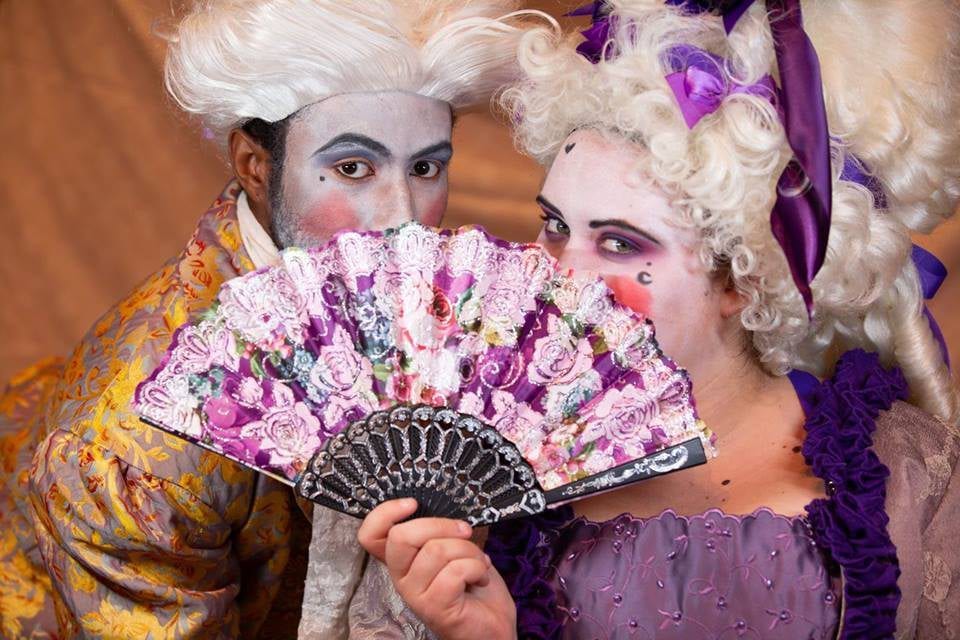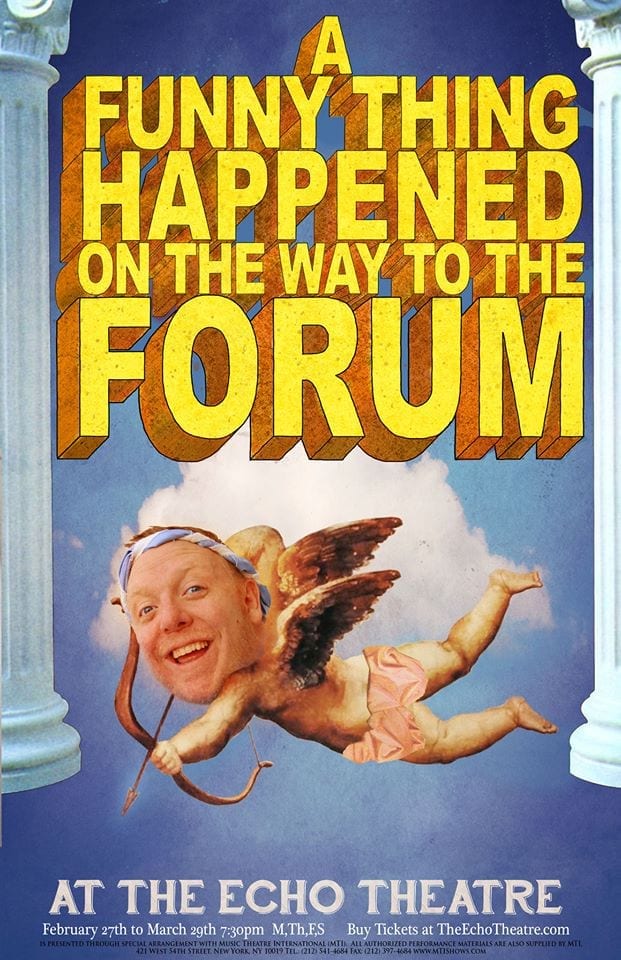SALT LAKE CITY — The current Westminster College production of The School for Scandal is perfectly encapsulated by an exchange between two characters:
Joseph Surface: Maria, I see you have no satisfaction in this society.
Maria: How is it possible I should?
Indeed, with a production as bland and unfunny as this, it is not possible to have satisfaction in the society that the director and cast create on stage.

Show closes November 17, 2018.
Written by Richard Brinsley Sheridan in 1777, The School for Scandal is a carefully plotted Renaissance comedy about The Teazles, a couple who have been married only six months. Because of their large differences in ages, Sir Peter Teazle (played by Stoney Grayer) is worried that his much younger wife (played by Sydney Shoell) is unfaithful to him. Meanwhile, their acquaintance Joseph Surface (played by Evan Leeds) and his brother Charles Surface (played by Jaiden Castleton) have been living off the largess of their absent uncle, Sir Oliver Surface (played by Viviane Turman). When Sir Oliver returns to England, he visits each his nephews under an assumed name and is shocked to learn about the lifestyle he has been supporting. The two stories intersect when Joseph tries to seduce Lady Teazle but is interrupted when Sir Peter arrives at Joseph’s home.
The problem with Westminster’s production is the failure for director Melanie Nelson to emphasize the humor in the script. Laughs from the audience were rare, and usually due to the physical humor that Nelson put into her blocking. Even this humor regularly failed to impress the opening night audience; the first library scene (with two characters hiding from one another and some witty lines) only produced 3 laughs in roughly 10 minutes. Throughout the show, most punchlines were met with stony silence or a quiet chuckle from a lone audience member.
I believe that Nelson’s failure was in the focus on having her actors worry more about foppish mannerisms than comedic timing. Most actors spoke in the high ranges of their vocal registers, had a turned up nose for most scenes, and had dainty movements. Therefore, most actors played caricatures of the 18th century upper class instead of characters that the audience could be emotionally invested in. As a result, most of the actors’ performances were interchangeable and limited in vocal or physical range. Leeds and Castleton could have traded roles at intermission, and I would have scarcely noticed. Ditto for Shoell and Dylan McKernen in the role of Lady Sneerwell, the town gossip.
Additionally, Nelson cast several women in male roles, none of which were convincing. Turman came closest as Sir Oliver, but never once could I completely forget that I was watching a woman play a man. The show would have been more successful in either changing the sex of the male characters played by women or creating a visual style where women could believably inhabit traditionally male roles.
There is not much else to say about the acting. Leeds was thoroughly unconvincing as a seducing lothario, and there was nothing titillating in how his character tried to charm Lady Teazle. Maddie Elledge‘s performance as Sir Benjamin Backbite was baffling in the way she played a child because in the first scene Backbite is supposed to be romantically pursuing Maria. (Elledge’s noticeably short height and her ability to convey impetulance, though, means that she has a bright future in playing very young characters in productions that do not want to cast child actors.) Finally, Makall Silvester’s diction was too sloppy for me to understand many of her hypocritical character’s punchlines.
I am a sucker for great period costuming, so I found Spencer Potter‘s costumes to be a delight. The men’s ancien régime culottes and stockings were all perfectly paired with beautifully decorated waistcoats, long jackets, and lace cravats and sleeve cuffs. The women were also sumptuously dressed, with most wearing close-bodied gowns with expansive skirts that lent the show the formality that a comedy of manners needs. These superb costumes were often paired with period wigs that reinforced the Renaissance setting. (No wig designer is credited, but this may have been the domain of hair and makeup designer Lina Le.)
The problem with the costuming is that it was too realistic, and it made the set and and lighting look cheap in comparison. Spencer Brown‘s four triangular set pieces were turned to reveal one face at a time and mixed and matched to create the needed settings. These were all painted to look flat and lacking in depth, a disappointment when compared to the exquisite costumes. The lighting (also designed by Brown) was suitable, but not impressive to the level of the costumes. A bigger shortcoming of the show was the Le’s makeup design, which had some actors with white painted faces (instead of wearing face powder) and distinct red circles on their cheeks. They looked more like circus clowns than aristocrats.
In the hands of an astute director and a cast with experience in Renaissance comedy, The School for Scandal could entertain a 21st century audience. While this was an ambitious choice for Westminster College, the production fails to live up to the potential of Sheridan’s script.





